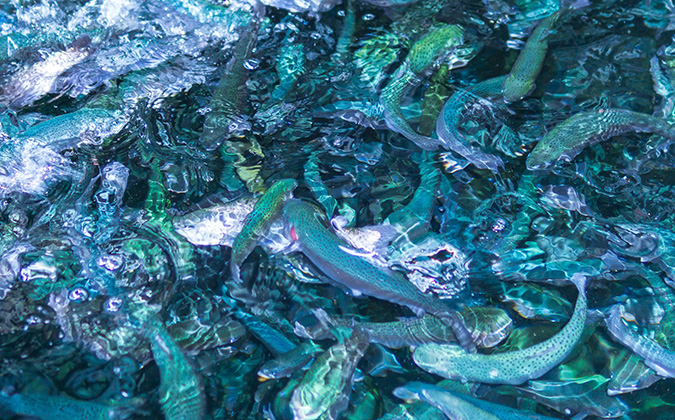
Molecular testing sheds new light on troublesome microorganism which threatens fish
A new molecular approach has revealed the ubiquitous and opportunistic nature of Saprolegnia parasitica, an oomycete (fungal-like microorganism) that can cause significant disease and subsequent economic loss in aquaculture, as well as impacting wild fish.
S. parasitica causes saprolegniosis, a fungal skin infection that produces gill, skin and eye lesions and can also infect and kill fish eggs. However, to date, little has been known about S. parasitica’s environmental prevalence and distribution because traditional detection methods for the pathogen are invasive, slow and laborious.
Using a new molecular technique called droplet digital polymerase chain reaction (ddPCR), researchers in Croatia developed a rapid assay to detect and quantify S. parasitica in the environment and aquaculture, and identify environmental factors affecting the oomycete’s pathogen load.
“This assay enables rapid and simple monitoring of S. parasitica,” the researchers explained in Nature Scientific Reports. “Our results provide insights into the environmental factors influencing S. parasitica’s abundance in different freshwater ecosystems.”
Detecting S. parasitica
After developing the assay, the researchers evaluated its effectiveness in the environment and aquaculture. To detect S. parasitica in the environment, they analyzed the environmental DNA (eDNA) of 21 water samples collected throughout Croatia. eDNA, the researchers explained, provides an alternative and preferable approach to detecting aquatic pathogens.
Approximately 60% of the water samples contained S. parasitica, demonstrating the pathogen’s ubiquity in the environment.
For detection in aquaculture, the researchers quantified S. parasitica from 15 trout eggs and the skin of 30 adult trout. Samples were taken from four trout farms in Croatia.
Skin swabs were collected from healthy trout and trout with skin injuries but without signs of saprolegniosis.
Compared to healthy trout, trout with skin injuries had a significantly higher S. parasitica load. Notably, the pathogen was detected in 91% of the samples from injured trout. “This finding indicates that S. parasitica is a dominant opportunistic skin pathogen of trout,” they explained.
Environmental factors
The scientists went on to evaluate the effect of numerous environmental parameters on S. parasitica load.
“Calcium and electrical conductivity were the most important parameters that positively influenced S. parasitica load,” they noted, building on previous studies which reported calcium’s positive effect on oomycete development.
Fluoride was found to have the strongest negative influence on pathogen load. Although fluoride reportedly inhibits microbial physiology, its effect on oomycetes has not been studied extensively. Further research on the relationship between fluoride and S. parasitica is needed, the authors said.
Practical applications of S. parasitica detection
Being able to rapidly quantify S. parasitica in the environment has practical implications, they stressed. For example, the ddPCR method reduces the reliance on laborious and less accurate detection methods.
In addition, monitoring the pathogen’s load in the environment and aquaculture promises to improve the response to outbreaks by fine-tuning anti-oomycetic chemical usage, thus reducing pollution and pathogen transmission.
You can read the full article in Nature Scientific Reports.
Posted on: February 13, 2023






